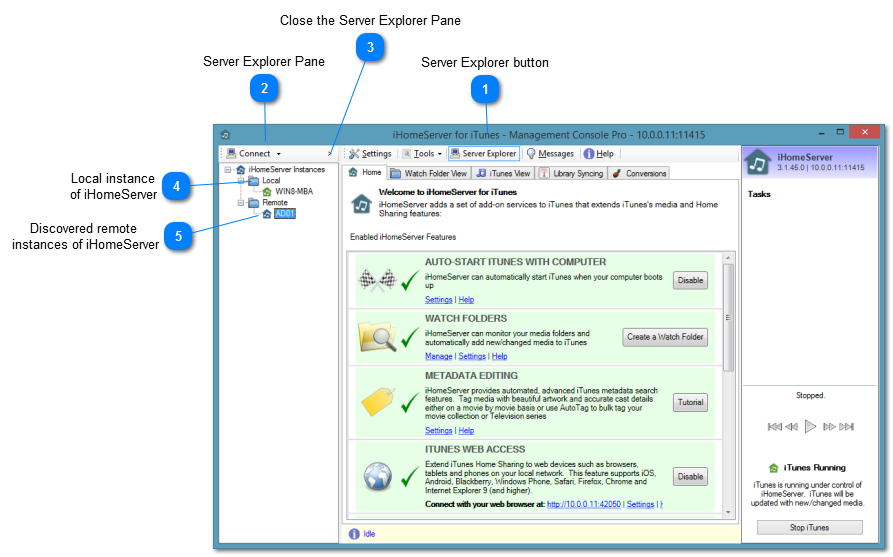iHomeServer Remote Management
The iHomeServer Management Console can be used to either manage a copy of iHomeServer running locally on the same computer or another iHomeServer instance on a remote computer on your same local subnet.
If you have installed the iHomeServer Management Console on another computer, you should now be able to find your remote iHomeServer server by clicking the 'Server Explorer' button in the main iHomeServer Console toolbar. This will open up the Server Explorer Pane showing all discovered iHomeServer instances on your local network.
Double-click the iHomeServer instance you want to manage, and the iHomeServer Console will connect to the remote server and can now be used to manage that server instead of the local one. If you want to return to manage a local instance of iHomeServer double click the name of your local computer in the Server Explorer pane.
The key components required to manage Remote Management are discussed further below:
 Server Explorer button
Press the Server Explorer to open, or close, the Server Explorer pane that will display discoverable instances of iHomeServer on your local network.
|
|
 Server Explorer Pane
The Server Explorer pane shows you both local and remotely discoverable instances of iHomeServer on your local network.
|
|
 Close the Server Explorer Pane
Click this button to close the Server Explorer Pane.
|
|
 Local instance of iHomeServer
The local folder includes your local iHomeServer (if iHomeServer is installed locally).
|
|
 Discovered remote instances of iHomeServer
The remote folder includes any instances of iHomeServer that have been discovered on your local network.
|
|
